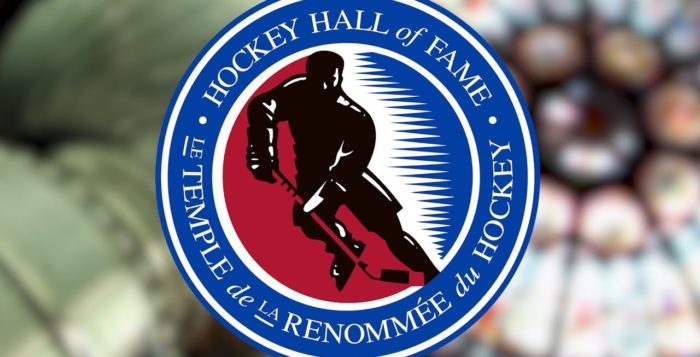This Day in Hockey History – August 26, 1961 – HHOF at the CNE
The Hockey Hall of Fame (HHOF) only seems like it has been around forever. Although established in 1943, the Hall still did not have a building by 1958. That year, Toronto was chosen as its home, and the Hockey Hall of Fame officially opened there, at the Canadian National Exhibition (CNE), on August 26, 1961.
Originally, the HHOF was intended to be housed at Kingston, Ontario – the birthplace of hockey, according to James T. Sutherland (an early proponent of creating a hall of fame). While trying to get a physical hall built, the HHOF occasionally inducted slates of members. Sutherland died in 1955, and Kingston still did not have a building to house the HHOF.
In 1958, Clarence Campbell, as president of the NHL, moved the location to Toronto. Three years earlier, Canada’s Sports Hall of Fame had opened there, on the grounds of Stanley Barracks (named for the Stanley Cup donor) and later the CNE. Then Conn Smythe (former head of the Toronto Maple Leafs) obtained funding to build on those same CNE grounds, sharing space with the other hall. With construction underway, the HHOF began inducting members annually.
Having finished construction on May 1, 1961, the HHOF held an official opening ceremony on August 26. The new building had cost somewhere around $480,000 or $500,000. In acknowledgement of their contributions in running and housing the HHOF, the ceremony included raising the flags of the six NHL teams. At the event, Smythe remarked, “Hockey is more than just a sport. It’s something fine and decent, a Canadian way of life.”
The opening was attended by most of the 43 living HHOF inductees. Reporting back, Ken McKenzie said, “There were 10 or 15 old-timers in the room. They started comparing ages. And there wasn’t one of them under 70. I don’t think sport in either Canada or the United States has ever brought more oldtime athletes together for a celebration unless it’s the baseball Hall of Fame show at Cooperstown.” Aurele Joliat (inducted in 1947) commented, “I never thought I’d see a day like this.”
Canadian Prime Minister John Diefenbaker had the honor of declaring the HHOF open. He took the opportunity to make a big announcement, which practically overshadowed the occasion. Canada’s federal government intended to implement the annual support of $5 million to aid and encourage amateur athletics, especially in international competition. A new National Advisory Council on Fitness, Recreation and Amateur Sport would develop a program of “federal grants and assistance in personnel and coach training, research, information, leadership training and coaching courses, assistance to participation in national sport in international competition and in other ways.” According to Diefenbaker, “There is no greater prestige for a country than success in international sport.” He promised, “The legislation will be the first major recognition of the importance of sports and athletics in the national life of the nation.”
With the new museum, the HHOF welcomed 11 new players: Syl Apps, Charlie Conacher, Hap Day, George Hainsworth, Joe Hall, Percy LeSueur, Frank Rankin, Maurice Richard, Milt Schmidt, Oliver Seibert, and Bruce Stuart. They also inducted three builders (George V. Brown, Paul Loicq, and Fred C. Waghorne) and three referees (Chaucer Elliott, Mickey Ion, and J. Cooper Smeaton).
Throughout the first year, the HHOF received at least 750,000 visitors. The CNE remained its home for about 32 years. During the mid-1980s, it began costing the NHL too much money to maintain, so President John Ziegler led a search for a new building. The committee assigned to the task decided to keep the HHOF in Toronto and found a historic bank building downtown that Ziegler said “would provide unparalleled ease of recognition and accessibility.” Its developer, Bell Canada Enterprise, restored the building at what became known as Brookfield Place. The HHOF moved into its current home there on June 18, 1993. In 2012, they extended their lease until 2032.
Additional Sources:
- https://www.hhof.com/htmlGeneralInfo/gi20300.shtml#FirstHome
- “Athletic Officials Have Praise For Government’s Sports Bill” and “Kinsella’s Corner,” Ottawa Citizen, 28 Aug. 1961, p. 14.
- Jack Sullivan, “Govt. to Propose $5,000,000 Annual Grant to Amateur Sport,”Ottawa Journal, 28 Aug. 1961, p. 13.
- “Amateur Athletics Leaders Hail Plan For Government Financial Assistance,” Windsor Star, 28 Aug. 1961, p. 21.
- “Good Morning,” Montreal Gazette, 28 Aug. 1961, p. 35.
- https://www.hhof.com/htmlInduct/indyearbyyear.shtml














